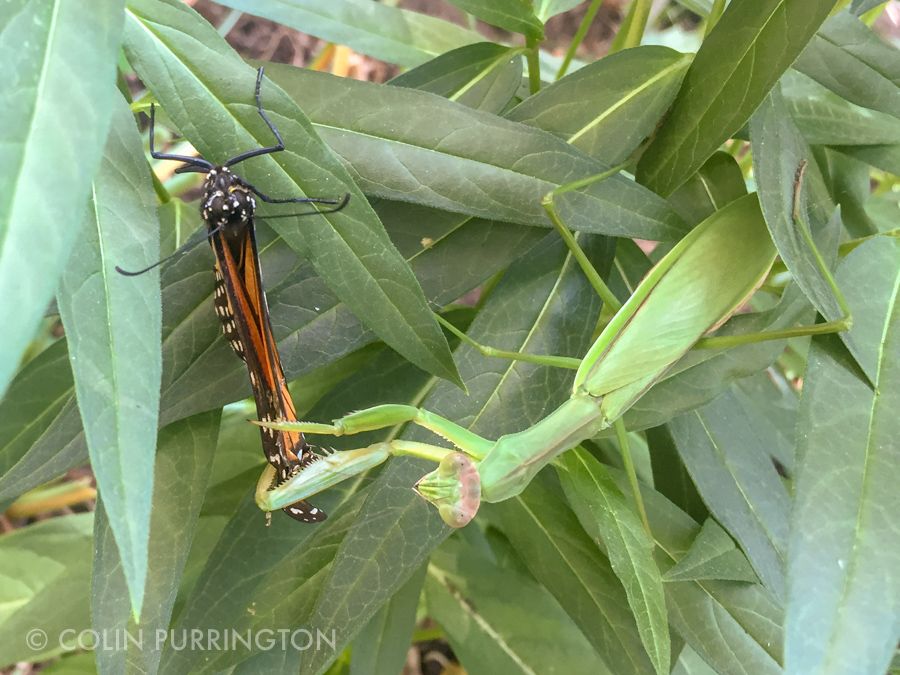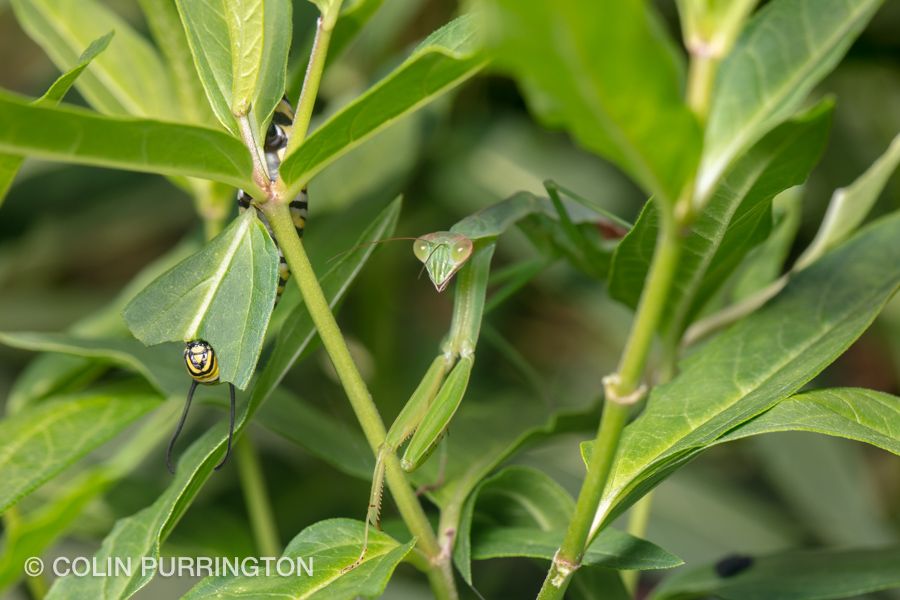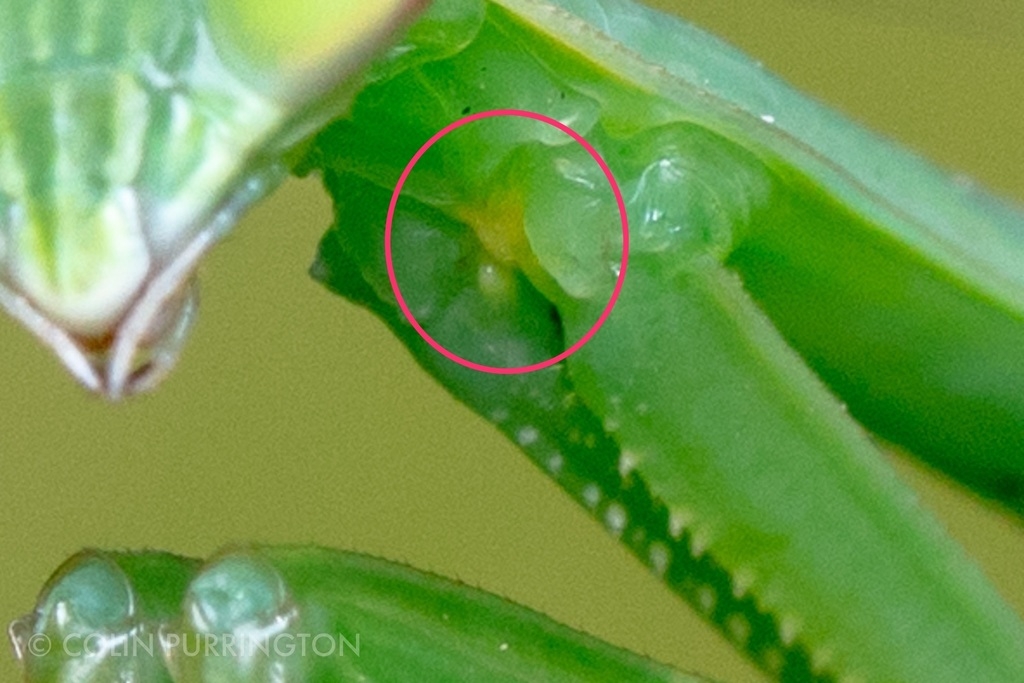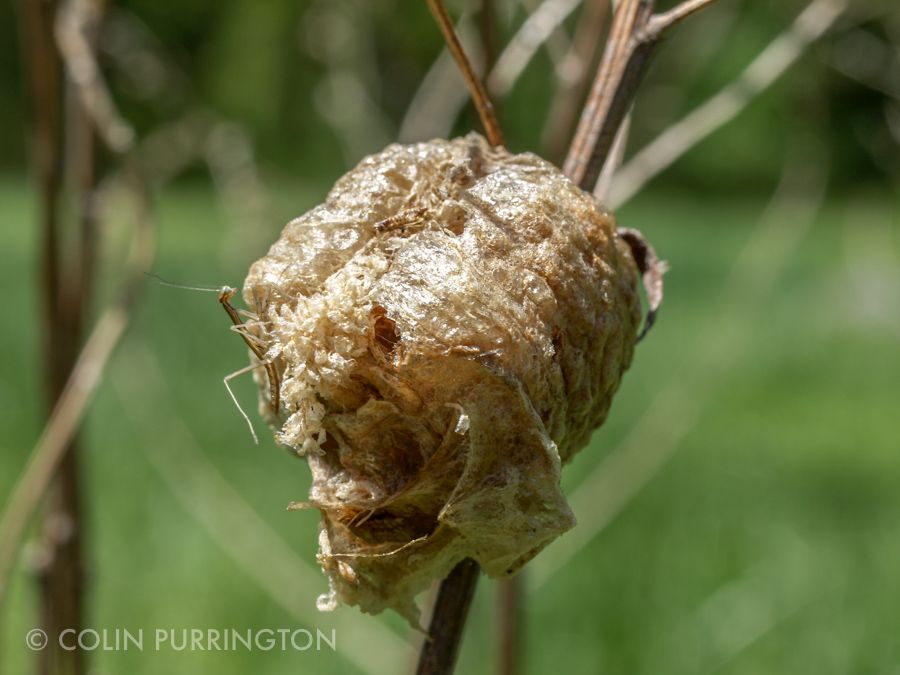This post is a PSA for anyone keen on helping monarchs: if you find Chinese mantids (Tenodera sinensis) in your yard, kill them. As proof, below is a photograph of one that had just snagged a monarch visiting my swamp milkweed. The monarch is fine, by the way. After I intervened she flew off, then came back within seconds and resumed ovipositing.

But unless you’re observing your milkweed patch obsessively, you’ll probably never catch a Chinese mantid in the act. But you can infer their presence by piles of monarch wings (i.e., no body attached). No other animal does this to monarchs.

And caterpillars are just as susceptible. Here’s a Chinese mantid I interrupted just as it was about to strike:

Chinese mantis can be easily distinguished from any of the native mantids by the presence of a yellow dot in between the forelegs.
If you find an ootheca (egg case) of this species, crush it. The oothecae have an irregular, messy surface that looks like a blob of brown, poorly-applied insulating foam. Oothecae of the native Carolina mantis are much smoother and streamlined (see, “Identifying mantid egg cases in Pennsylvania“).
If you’re like most people (including myself), you grew up believing that mantids are a pesticide-free way of reducing garden pests. How could thousands of web sites be wrong?? The truth is, however, that Chinese mantids are so large that they tend to only eat large insects, and that usually means mainly butterflies, not aphids or other species that are tiny. So if you hate butterflies, by all means encourage Chinese mantids in your yard. But if you like butterflies in your garden, kill the Chinese mantids. And don’t just relocate them, even though that seems like the friendly, eco, green, peace-loving thing to do. Moving introduced, invasive species to another location simply facilitates further spread.
FYI, Chinese mantids also eat hummingbirds, plus other birds that are even bigger. The authors of that linked paper conclude,
“Our compilation suggests that praying mantises frequently prey on hummingbirds in gardens in North America; therefore, we suggest caution in use of large-sized mantids, particularly non-native mantids, in gardens for insect pest control.”
Italics mine.


